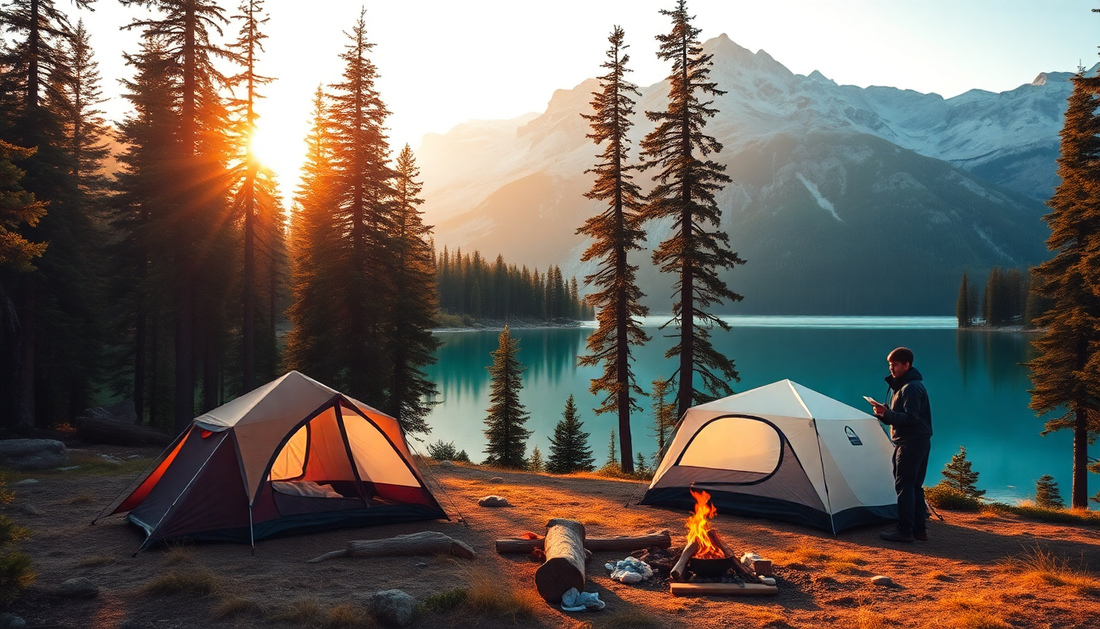
How to Find the Best Campsite for Your Trip
Share
Embarking on an outdoor adventure is an exhilarating experience, but the success of your trip often hinges on finding the perfect campsite. Whether you're planning a weekend getaway or a week-long excursion, the right campsite can make all the difference in ensuring a comfortable, memorable, and safe experience. In this blog post, we'll explore the key factors to consider when choosing a campsite and share tips to help you discover the best spots for your next camping trip.
Factors to Consider When Choosing a Campsite
Selecting the ideal campsite involves weighing several important factors:

Location and Accessibility
The location of your campsite can greatly impact the overall experience. Consider factors such as proximity to trailheads, proximity to water sources, and ease of access. Choosing a campsite that is easily accessible, yet still offers a sense of seclusion, can be a delicate balance.
Terrain and Surroundings
The terrain and natural surroundings of a campsite can significantly affect your comfort and enjoyment. Look for level, well-drained ground that provides a stable and comfortable surface for your tent. Avoid areas with steep slopes, rocky or uneven ground, or dense vegetation that could make setting up camp challenging.
Water Sources
Access to a reliable water source is crucial for camping. Ideally, your campsite should be located near a stream, lake, or other water source to ensure you have a convenient supply of drinking water and the ability to cook, clean, and bathe.
Weather Conditions
Be mindful of the weather patterns and potential hazards in the area. Consider factors such as prevailing winds, exposure to the sun, and the potential for storms or heavy rainfall. Choosing a campsite that offers some protection from the elements can enhance your overall comfort and safety.
Wildlife Presence
Familiarize yourself with the local wildlife in the area and choose a campsite that minimizes the risk of encounters with potentially dangerous animals. Avoid areas with known bear activity, and be mindful of other wildlife that may be attracted to your campsite.
Types of Campsites
When it comes to finding the perfect campsite, there are several options to consider:
Established Campgrounds
Established campgrounds, often found in national and state parks, offer a more structured and developed camping experience. These sites typically provide amenities such as restrooms, picnic tables, and designated camping spots, making them a convenient choice for families or those new to camping.
Backcountry Camping
Backcountry camping, also known as wilderness camping, involves venturing into more remote and undeveloped areas. This type of camping offers a more immersive and secluded experience, but it also requires more planning and self-sufficiency.
Dispersed Camping
Dispersed camping, or boondocking, refers to camping in areas outside of designated campgrounds, often on public lands. This approach allows for greater flexibility and the opportunity to find more remote and private campsites, but it also requires more research and preparation.
How to Find the Best Campsites for Hiking
When planning a hiking-focused camping trip, it's essential to consider the proximity and accessibility of your campsite to the trails you intend to explore. Here are some tips to help you find the best campsites for your hiking adventures:
Research and Planning
Begin your search by researching the hiking trails and outdoor areas you plan to visit. Consult hiking guides, online resources, and local outdoor enthusiasts to identify potential camping spots that are well-suited for your hiking plans.
Using Online Resources and Apps
Leverage online tools and mobile apps to help you locate and evaluate potential campsites. Websites like AllTrails, Gaia GPS, and FreeRoam offer detailed information about campgrounds, dispersed camping areas, and backcountry sites, often with user reviews and ratings.
Local Recommendations
Reach out to local outdoor outfitters, park rangers, or hiking groups to gather insider knowledge about the best campsites in the area. These sources can provide valuable insights and recommendations based on their firsthand experiences.
Tips for Finding Secluded Campsites
For those seeking a more private and serene camping experience, here are some tips for finding secluded campsites:
Timing Your Trip
Consider visiting during off-peak seasons or on weekdays to increase your chances of finding a more secluded campsite. Weekends and holidays tend to be busier, so adjusting your travel dates can make a significant difference.
Exploring Off-the-Beaten-Path Locations
Venture beyond the well-known and heavily trafficked camping areas. Explore remote or less-popular regions, as these are more likely to offer hidden gems and undiscovered campsites.
Using Topographic Maps
Topographic maps can be invaluable tools for identifying potential secluded camping spots. Look for areas with rugged terrain, dense vegetation, or limited road access, as these are often less frequented by other campers.
Camping Spots Near Popular Destinations
If you're planning to camp near popular outdoor destinations, such as national parks or scenic areas, consider the following options:
National and State Parks
Many national and state parks offer a range of camping options, from developed campgrounds to more remote backcountry sites. Research the specific park's camping policies and availability to find the best fit for your trip.
Scenic Areas and Attractions
Explore camping opportunities near popular scenic areas, such as mountain ranges, lakes, or coastal regions. These locations often have a variety of camping options, from established campgrounds to dispersed camping areas.
Urban Camping Options
For those seeking a unique camping experience, consider urban camping options, such as campgrounds or RV parks near major cities. These sites can provide easy access to urban amenities while still offering a taste of the outdoors.
Evaluating a Potential Campsite
When evaluating a potential campsite, consider the following factors to ensure a safe and comfortable experience:
Safety Considerations
Assess the campsite for any potential hazards, such as proximity to cliffs, steep slopes, or areas prone to flooding. Ensure the site is well-drained and offers a stable, level surface for your tent.
Environmental Impact
Choose a campsite that minimizes your impact on the natural environment. Avoid areas with fragile vegetation or sensitive ecosystems, and follow the principles of Leave No Trace to preserve the beauty of the outdoors.

Comfort and Amenities
Consider the amenities available at the campsite, such as access to water, the availability of picnic tables or fire pits, and the overall comfort and privacy the site offers.
By taking the time to carefully evaluate and select the best campsite for your trip, you can ensure a memorable and enjoyable outdoor adventure. Happy camping!
